
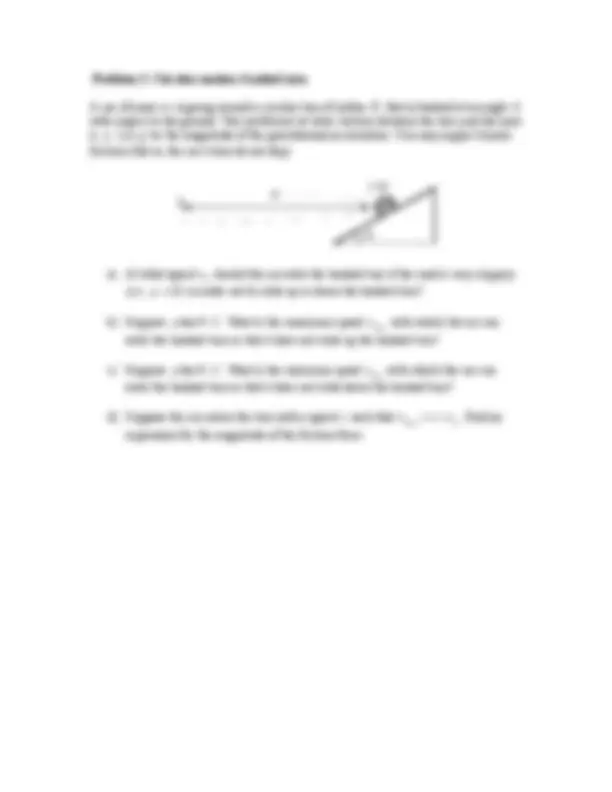
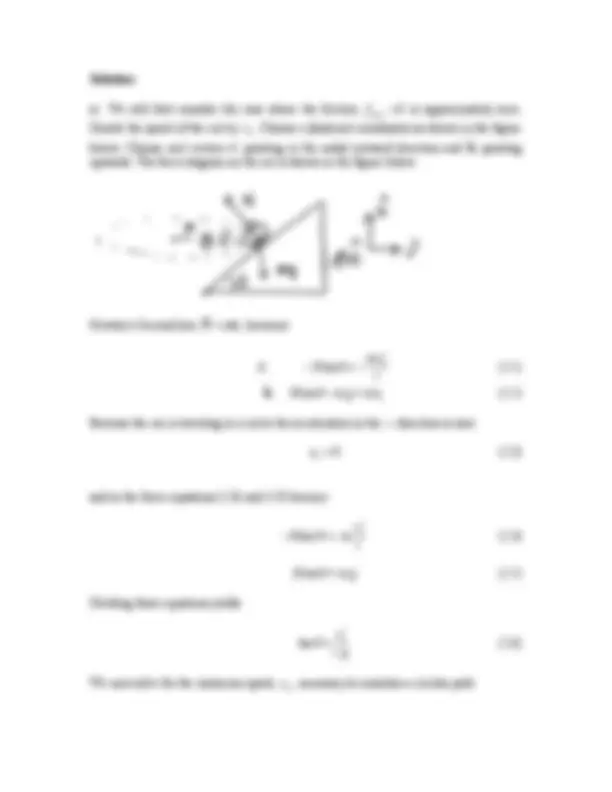
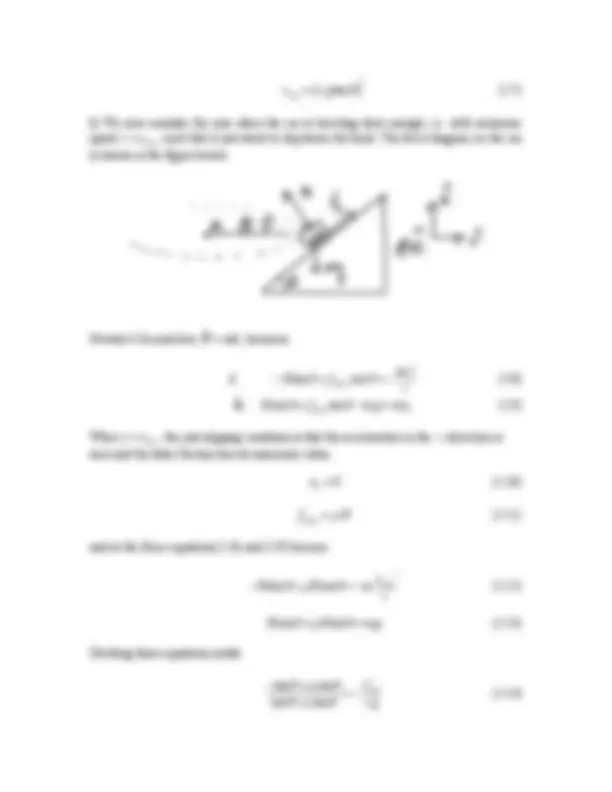
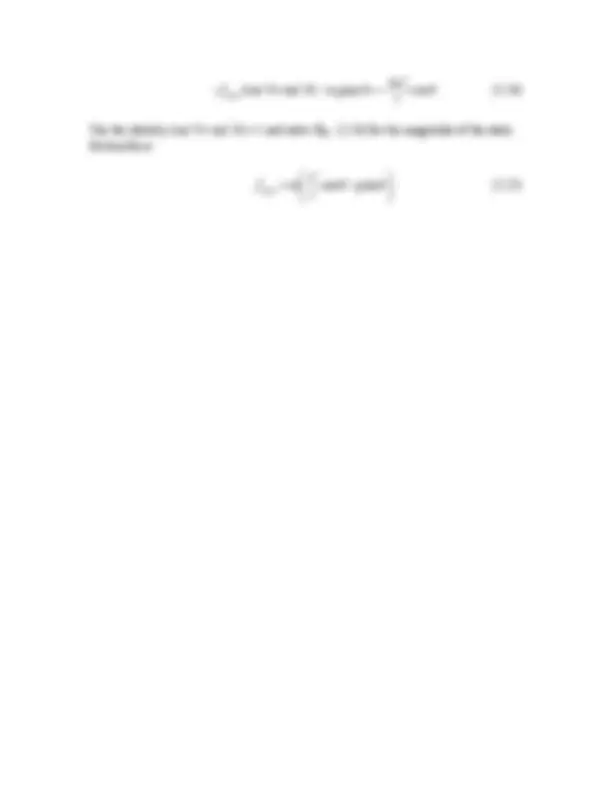
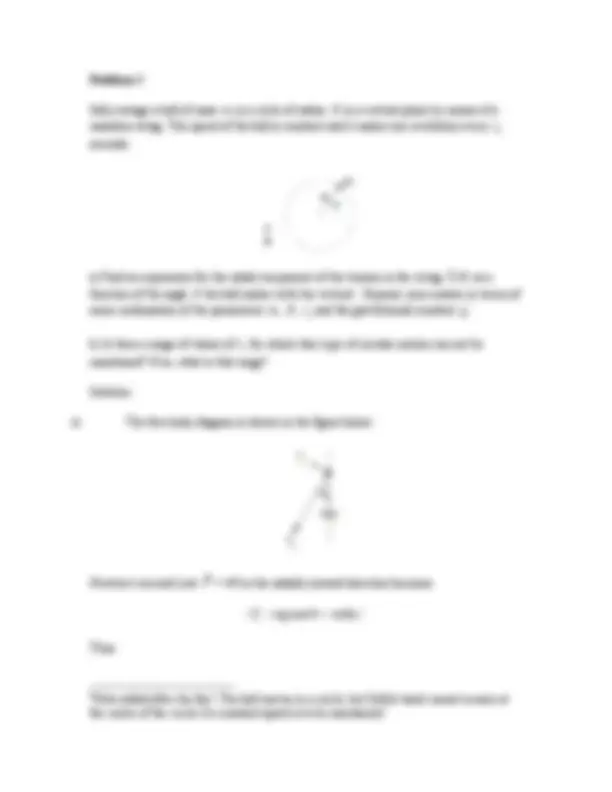
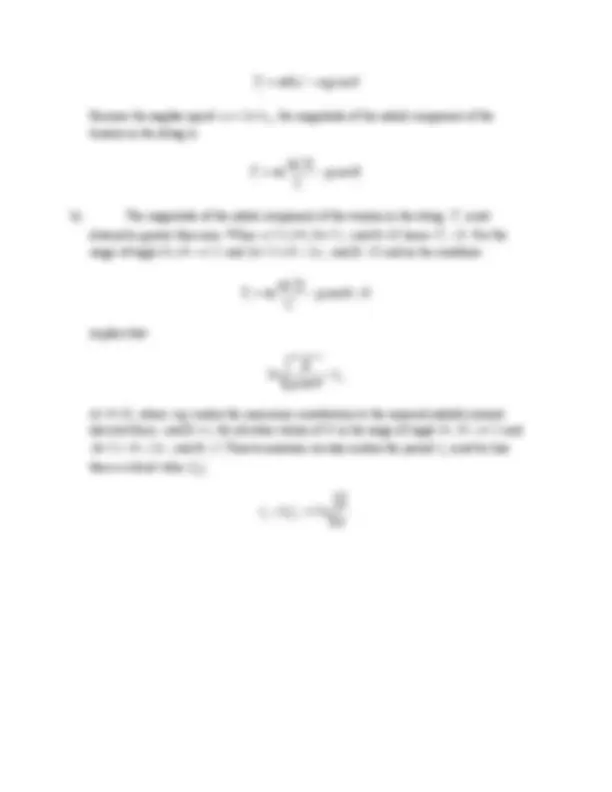
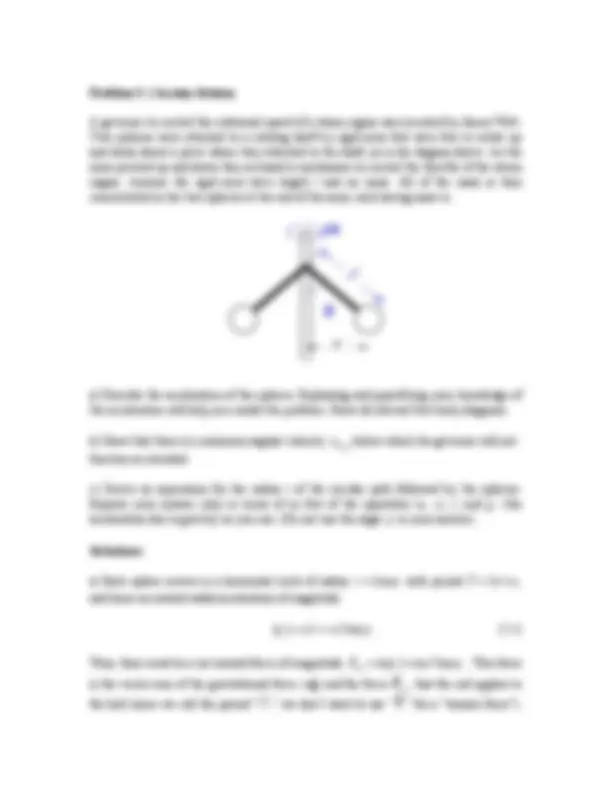
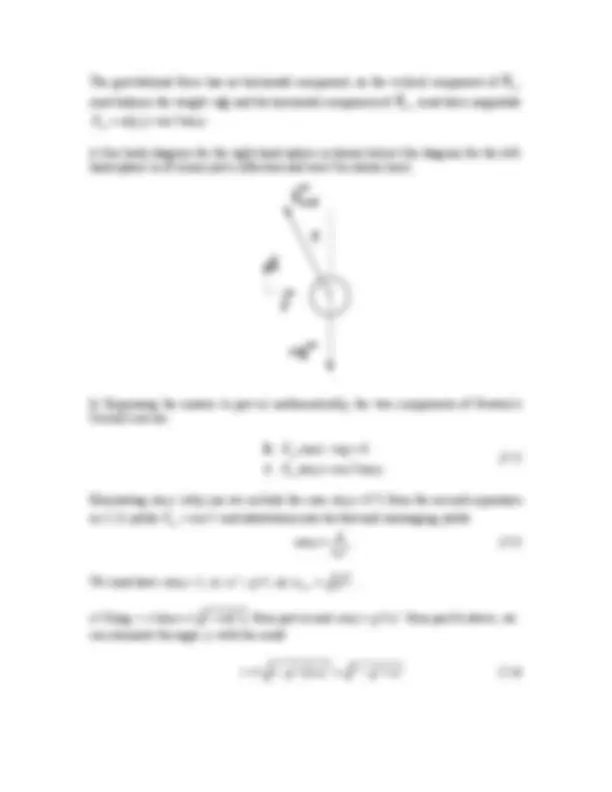

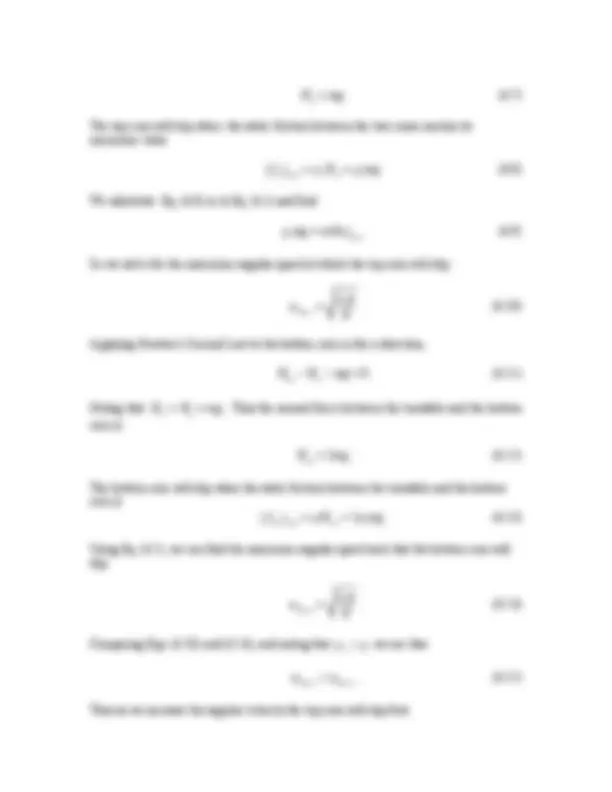
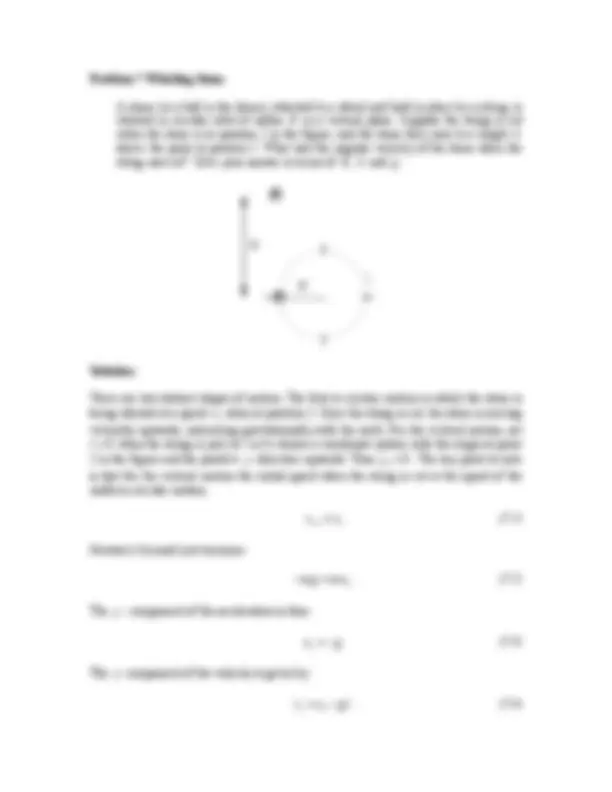
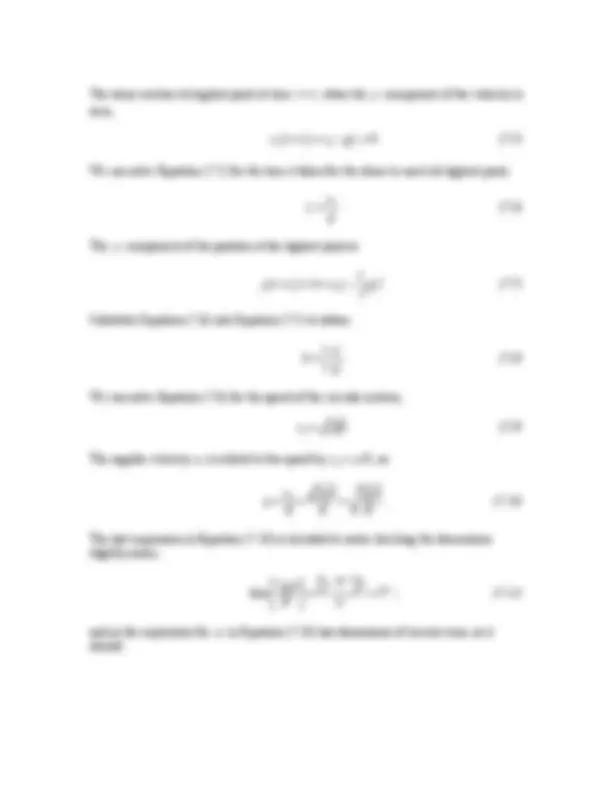
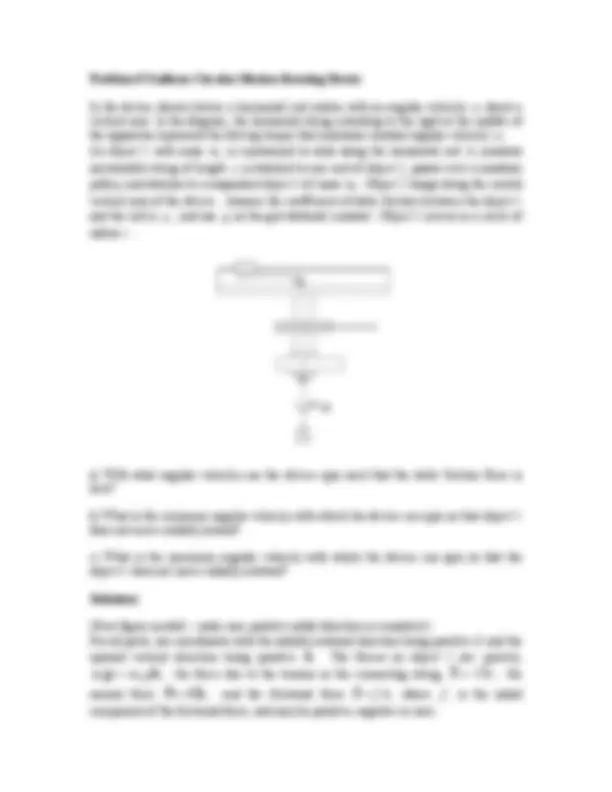
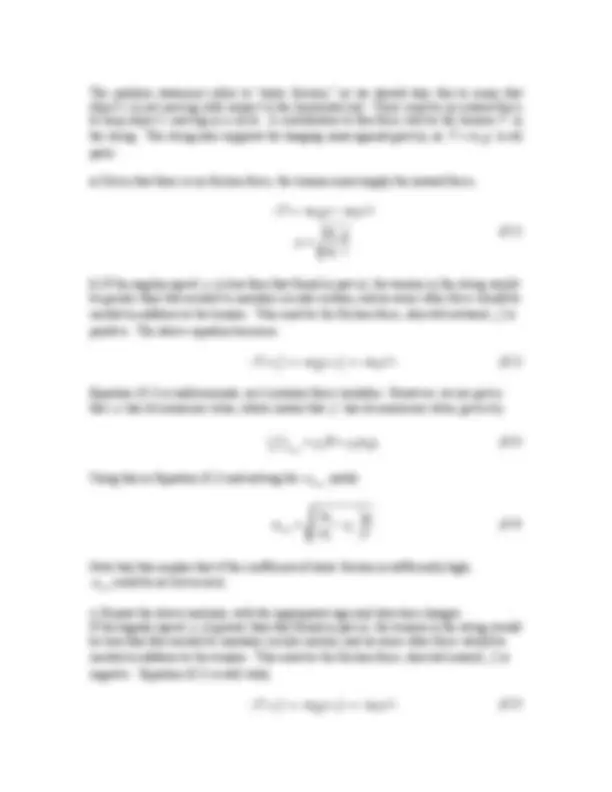
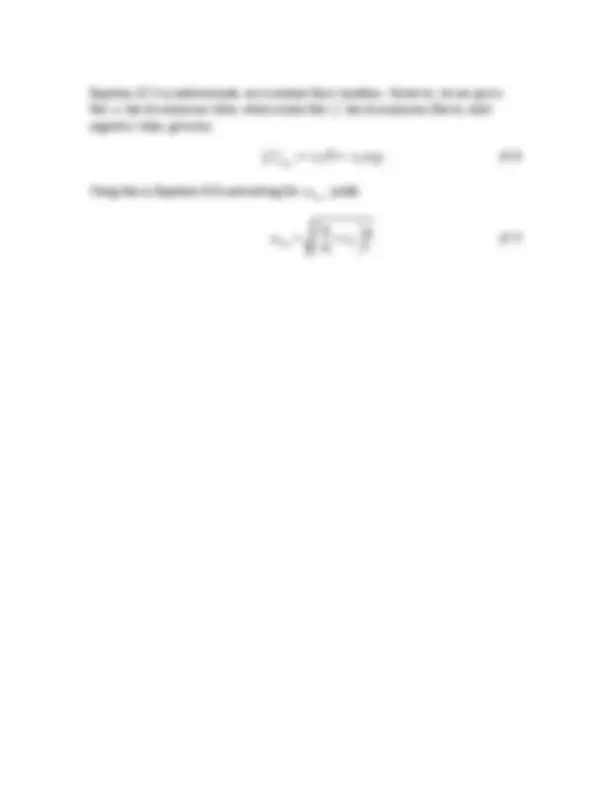
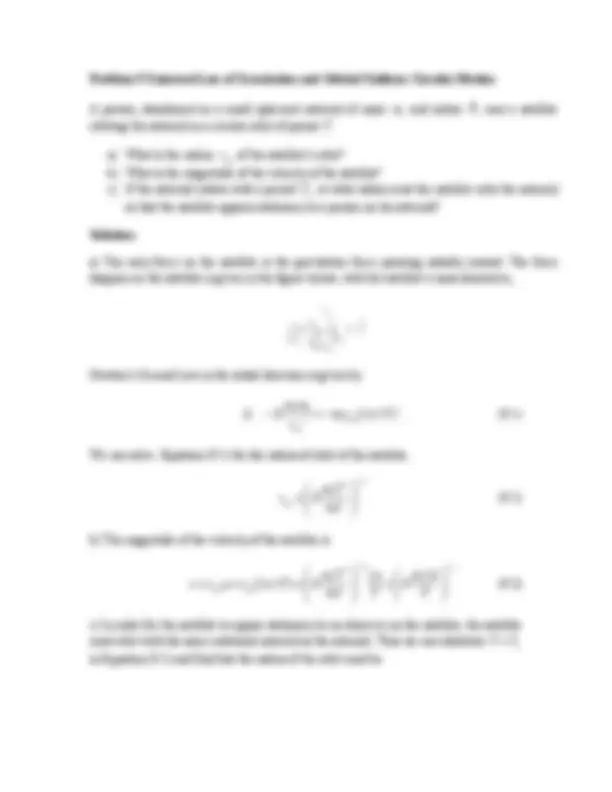

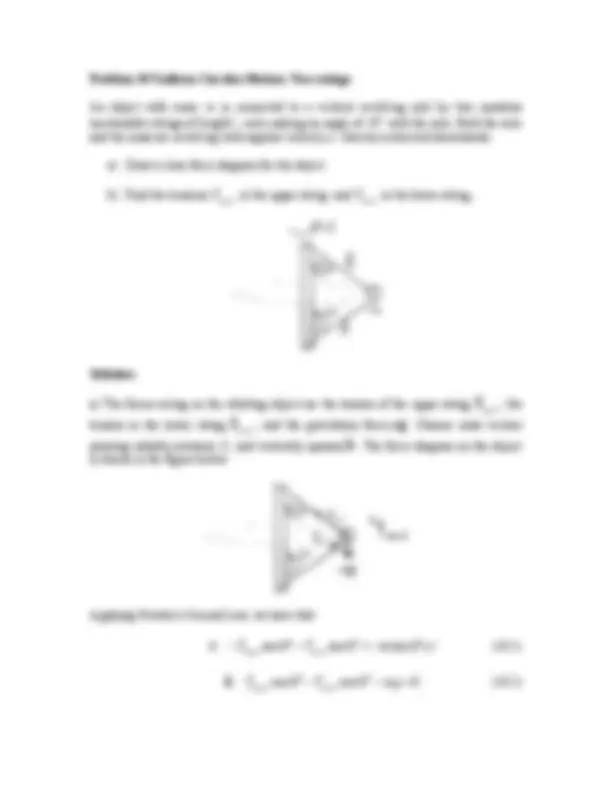
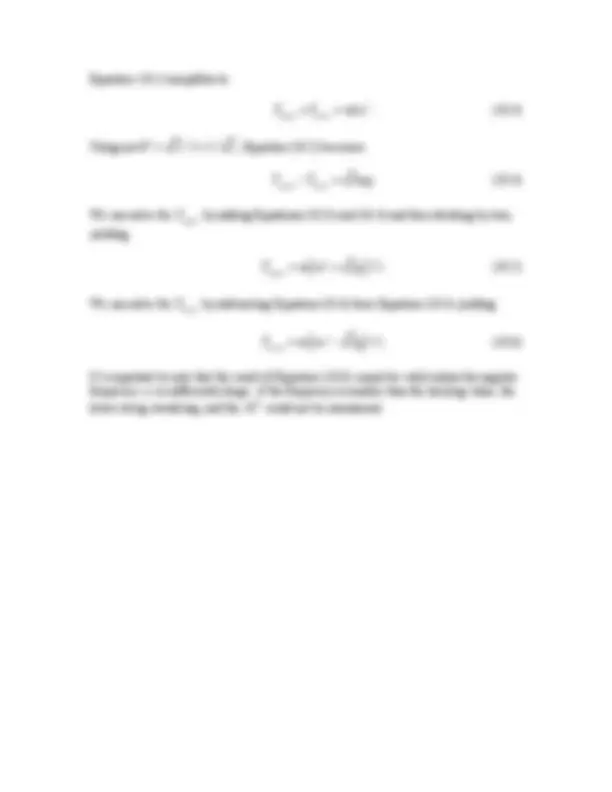
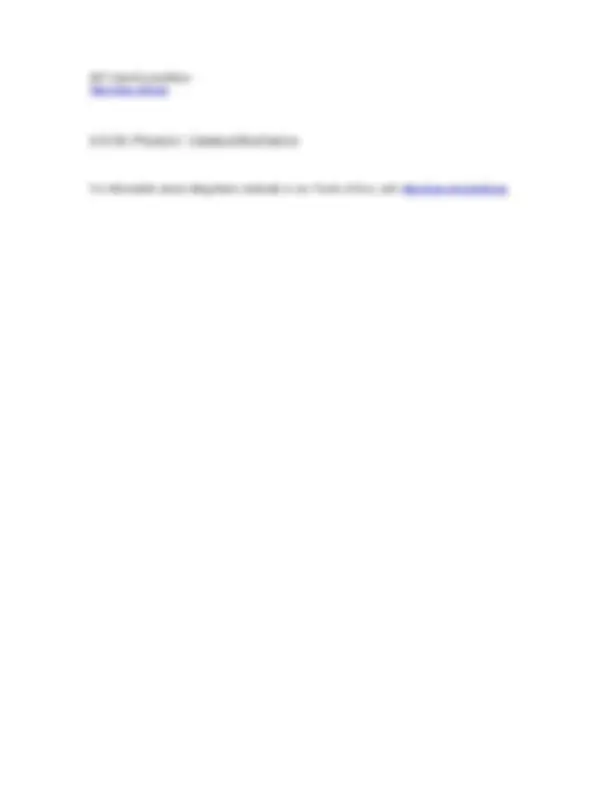


Study with the several resources on Docsity

Earn points by helping other students or get them with a premium plan


Prepare for your exams
Study with the several resources on Docsity

Earn points to download
Earn points by helping other students or get them with a premium plan
Community
Ask the community for help and clear up your study doubts
Discover the best universities in your country according to Docsity users
Free resources
Download our free guides on studying techniques, anxiety management strategies, and thesis advice from Docsity tutors
Solutions to various problems related to circular motion and dynamics, including a double star system, banked turns, a swinging ball, a ball connected to a rotating shaft, and a whirling stone. The problems involve applying Newton's Second Law and analyzing forces to determine the behavior of the systems.
Typology: Exercises
1 / 28

This page cannot be seen from the preview
Don't miss anything!





















Problem 1: Double Star System
Consider a double star system under the influence of gravitational force between the
stars. Star 1 has mass m 1
and star 2 has mass m 2
. Assume that each star undergoes
uniform circular motion about the center of mass of the system. If the stars are always a
fixed distance s apart, what is the period of the orbit?
Solution: Choose radial coordinates for each star with origin at center of mass. Let r ˆ 1
be
a unit vector at Star 1 pointing radially away from the center of mass. Let r ˆ 2
be a unit
vector at Star 2 pointing radially away from the center of mass. The force diagrams on
the two stars are shown in the figure below.
From Newton’s Second Law, F = m a , for Star 1 in the radial direction is 1 1 1
1 2 2 r ˆ : " G
m m = " m r!. 1 2 1 1 s
We can solve this for r 1
r = G
m 2 . (^1 2 ) ! s
Newton’s Second Law, F = m a , for Star 2 in the radial direction is 2 2 2
m m r ˆ : " G
1 2 = " m r!
2 . 2 2 2 2 s
We can solve this for r 2
m
r = G
1 . (^2 2 ) ! s
Since s , the distance between the stars, is constant
m m ( m + m 1
)
s = r + r = G
2
1 = G
2
(^1 2 2 2 2 2 2 ) s
! s! s!
Thus the angular velocity is
)
1 2
" (^) ( m + m #
! = $
2
3
1
% s & '
and the period is then
2 3 2! #^4! s $
1 2
G (^) ( m 2
As will be seen later, this result is a variation of Kepler’s Third Law.
Solution:
a) We will first consider the case where the friction f! 0 is approximately zero. static
Denote the speed of the car by v 0
. Choose cylindrical coordinates as shown in the figure
below. Choose unit vectors r ˆ pointing in the radial outward direction and k
pointing
upwards. The force diagram on the car is shown in the figure below.
Newton’s Second law, F = m a , becomes
mv 0
2
r ˆ :! N sin " =! ( 2. 1 )
r
k
: N cos! " m g = m a z
Because the car is traveling in a circle the acceleration in the z - direction is zero
a z
and so the force equations ( 2. 8 ) and ( 2. 9 ) become
v 0
2
! N sin " =! m ( 2. 4 )
r
N cos! = m g ( 2. 5 )
Dividing these equations yields
v 0
2
tan! = ( 2. 6 )
r g
We now solve for the minimum speed, v 0
, necessary to maintain a circular path
1
min
2 ( 2. 7 )
b) We now consider the case when the car is traveling slow enough, i.e. with minimum
speed v = v min
, such that it just starts to slip down the bank. The force diagram on the car
is shown in the figure below.
Newton’s Second law, F = m a , becomes
2
r ˆ : " N sin! + f cos! = "
m v
( 2. 8 ) static r
k
: N cos! + f sin! " m g = m a ( 2. 9 ) static z
When v = v min
, the just-slipping condition is that the acceleration in the z - direction is
zero and the static friction has its maximum value:
a z
f =μ N ( 2. 11 ) static
and so the force equations ( 2. 8 ) and ( 2. 9 ) become
v min
2
! N sin " +μ N cos " =! m ( 2. 12 )
r
N cos! +μ N sin! = m g ( 2. 13 )
Dividing these equations yields
2 ! sin " +μ cos " v min =! ( 2. 14 )
cos " +μ sin " r g
! sin "! μ cos " v
2
max ( 2. 20 )
cos "! μ sin " r g
which can then be solved for the maximum speed, v max
, necessary to avoid sliding down
the embanked turn.
1
v = r g ( 2. 21 ) max (^) ( ( $
cos! " μ sin! ' '
The figure below shows a plot of v
2 / r g vs. μ when! = 45
!
. The shaded area
represents the set of points ( μ, v
2 / r g ) where the car remains in a circular path. Above
that is the set of points in which the car will slid outward and below the set of points in
which the car will slide inward.
d) The analysis is the same as in part c) but the magnitude of the static friction is less
than its maximum value. Hence we can multiply Eq. ( 2. 16 ) by cos! and Eq. ( 2. 17 ). by
sin!.
2 " =!
mv
2
! N sin " cos "! f cos cos " ( 2. 22 ) static r
N cos! sin! " f sin
2 ! " m g sin! = 0 ( 2. 23 ) static
Now add the two equations to yield
2 mv
(cos
2 " + sin
2 ! f ")! m g sin " =! cos " ( 2. 24 ) static r
Use the identity (cos
2 ! + sin
2 !) = 1 and solve Eq. ( 2. 24 ) for the magnitude of the static
friction force
2 &
f = m
r (^) '
cos! " g sin! ( 2. 25 ) static (
r
= mR!
2 " mg cos #
Because the angular speed! = 2 " / t 0
, the magnitude of the radial component of the
tension in the string is
2 R
T r
= m ( 2
" g cos #)
t 0
b) The magnitude of the radial component of the tension in the string T r
must
always be greater than zero. When! / 2 "# " 3! / 2 , cos( !) " 0 hence T r
- For the
range of angle 0 !" < # / 2 and 3! / 2 "# < 2! , cos( !) > 0 and so the condition
2 R
T = m ( " g cos #) > 0 r t 0
2
implies that
g cos "
t 0
At! = 0 , where mg makes the maximum contribution to the required radially inward
directed force, cos(0) = 1 , for all other values of! in the range of angle 0 <! < " / 2 and
3! / 2 < " < 2! , cos( !) < 1 Thus to maintain circular motion the period t 0
must be less
than a critical value ( t 0
c
t. 0
< ( t 0
c
g
Problem 4
A ball of mass m is connected by a spring to shaft that is rotating with constant angular
velocity!. A student looking down on the apparatus sees the ball moving
counterclockwise in a circular path of radius r. When the spring is unstretched, the
distance from the mass to the axis of the shaft is r 0
. The orbital plane of the ball is a
height h above the ground. Suddenly the ball breaks loose from the spring, flies through
the air, and hits the ground an unknown horizontal distance d from the point the ball
breaks free from the spring. Let g be the magnitude of the acceleration due to gravity.
You may ignore air resistance and the size of the ball.
a) What is the magnitude of the spring constant k? Show all your work. Answers
without work will not receive credit.
b) Find an expression for the horizontal distance d the ball traveled from the point
the ball breaks free from the spring until it hits the ground.
Solution:
a) Given that gravity may be neglected, the only force on the ball is the spring force. The
ball is still moving with uniform circular motion, with acceleration directed inward, and
so the spring force is directed inward, horizontal and perpendicular to the ball’s motion.
The magnitude of the spring force is given by Hooke’s Law, F spring
= k! l = k ( r " r 0
From Newton’s Second Law, this force is related to the inward acceleration by
F = k ( r! r ) = m "
2 r. ( 4. 1 ) spring 0
Solving for the spring constant k gives
m!
2 r
k =. ( 4. 2 )
( r " r 0
Problem 5: Circular Motion
A governor to control the rotational speed of a steam engine was invented by James Watt.
Two spheres were attached to a rotating shaft by rigid arms that were free to rotate up
and down about a pivot where they attached to the shaft, as in the diagram above. As the
arms pivoted up and down they actuated a mechanism to control the throttle of the steam
engine. Assume the rigid arms have length l and no mass. All of the mass is then
concentrated in the two spheres at the end of the arms, each having mass m.
a) Describe the acceleration of the spheres. Explaining and quantifying your knowledge of
the acceleration will help you model the problem. Show all relevant free body diagrams.
b) Show that there is a minimum angular velocity! min
below which the governor will not
function as intended.
c) Derive an expression for the radius r of the circular path followed by the spheres.
Express your answer only in terms of as few of the quantities m ,! , l , and g (the
acceleration due to gravity) as you can. (Do not use the angle! in your answer).
Solutions:
a) Each sphere moves in a horizontal circle of radius r = l sin! with period T = 2! / " ,
and hence an inward radial acceleration of magnitude
a r
2 r =!
2 l sin ". ( 5. 1 )
Thus, there must be a net inward force of magnitude F = m a = m!
2 l sin ". This force net r
!^!
is the vector sum of the gravitational force m g and the force F rod
that the rod applies to
!
the ball (since we call the period “ T^ ,” we don’t want to use “ T^ ” for a “tension force”).
The gravitational force has no horizontal component, so the vertical component of F rod
!^!
must balance the weight m g and the horizontal component of F rod
must have magnitude
F = m a = m!
2 l sin ". net r
A free body diagram for the right-hand sphere is shown below (the diagram for the left-
hand sphere is of course just a reflection and won’t be shown here).
b) Expressing the answer to part a) mathematically, the two components of Newton’s
Second Law are:
k
rod
cos! # mg = 0
( 5. 2 )
r ˆ : F rod
sin! = m "
2 l sin !.
Eliminating sin! (why can we exclude the case sin! = 0 ?) from the second expression
in ( 5. 2 ) yields F rod
= m!
2 l and substitution into the first and rearranging yields
g cos! = 2
l "
We must have cos! < 1 , or!
2
g / l , so! min
= g / l.
c) Using r = l sin! = l 1 " cos
2 ! from part a) and cos! = g / l "
2 from part b) above, we
can eliminate the angle! with the result
2 2 2 4 r = l 1 " g / (^) ( l! (^) ) = l " g /!. ( 5. 4 )
2
Problem 6:
Two identical coins each of mass m are stacked on top of each other exactly at the rim of
a turntable, a distance R from the center. The turntable turns at constant angular speed
! and the coins rides without slipping. Suppose the coefficient of static friction between
the turntable and the coin is given by μ 1
and the coefficient of static friction between the
the coins is given by μ 2
with μ 2
<μ 1
. Let g be the gravitational constant.
a) What is the magnitude of the radial force (friction force) exerted by the turntable
on the bottom coin?
b) As the angular speed increases which coin slips first or do they both slip at the
same instant? What is the maximum angular speed! max
such that no slipping
occurs?
Solution: We choose a polar coordinate system and the free body force diagrams on each
coin are shown in the figure below.
We will now apply Newton’s Second Law to each coin and determine the magnitude of
the radial force exerted by the turntable on the bottom coin, f bG
. The key point is that the
static friction between the coins form an action-reaction pair, (neither coin is slipping).
So the static friction that makes the top coin accelerate inward also acts on the bottom
coin in the opposite direction (radially outward).
Newton’s Second Law on the bottom coin in the radial direction, noting that the
centripetal acceleration has magnitude a r
2 , is given by
=! m R "
2 ! f.^ (^6.^1 ) bG
Newton’s Second Law on the top coin in the radial direction, noting that the centripetal is
given by
=! m R "
2 ! f. ( 6. 2 ) tb
Newton’s Third Law, requires that f bt
= f So substituting Eq. ( 6. 2 ) becomes tb
f bt
= mR!
2
. ( 6. 3 )
Substituting Eq. ( 6. 3 ) into Eq. ( 6. 1 ) then yields
2 =! m R "
2 ! f. ( 6. 4 ) bG
Hence the magnitude of the radial inward force exerted on the bottom coin due to the
turntable is then
= 2 m R!
2 f ( 6. 5 ) bG
So the static friction on the bottom coin is twice the magnitude of the static fiction on the
upper coin.
In general slippage between surfaces will occur because static friction has a maximum
possible value f max
=μ N. So we must find the magnitude of the normal force between
the relevant surfaces.
Applying Newton’s Second Law to the top coin in the z-direction, noting that the coin is
static hence a z
= 0 , yields
N! mg = 0. ( 6. 6 ) tb
Thus the normal force between the coins is
Problem 7 Whirling Stone
A stone (or a ball in the demo), attached to a wheel and held in place by a string, is
whirled in circular orbit of radius R in a vertical plane. Suppose the string is cut
when the stone is at position 2 in the figure, and the stone then rises to a height h
above the point at position 2. What was the angular velocity of the stone when the
string was cut? Give your answer in terms of R , h and g.
Solution:
There are two distinct stages of motion. The first is circular motion in which the stone is
being whirled at a speed v 0
when at position 2. Once the string is cut, the stone is moving
vertically upwards, interacting gravitationally with the earth. For the vertical motion, set
t = 0 when the string is just cut. Let’s choose a coordinate system with the origin at point
2 in the figure and the positive y - direction upwards. Thus y 0
= 0. The key point to note
is that for the vertical motion the initial speed when the string is cut is the speed of the
uniform circular motion,
v y ,
= v 0
Newton’s Second Law becomes
! m g = m a y
The y - component of the acceleration is then
a y
=! g. ( 7. 3 )
The y - component of the velocity is given by
v y
= v 0
! g t. ( 7. 4 )
The stone reaches its highest point at time t = t 1
when the y - component of the velocity is
zero,
v y
( t = t 1
) = v 0
! g t 1
We can solve Equation ( 7. 5 ) for the time it takes for the stone to reach its highest point,
v
t =
0
. ( 7. 6 ) 1 g
The y - component of the position at the highest point is
y t ( = t ) = h = v t! g t 1
1 0 1 2
Substitute Equation ( 7. 6 ) into Equation ( 7. 7 ) to obtain
1 v
2
h =
0
. ( 7. 8 )
2 g
We can solve Equation ( 7. 8 ) for the speed of the circular motion,
v 0
= 2 gh. ( 7. 9 )
The angular velocity! is related to the speed by v 0
=! R , so
v 0 =. ( 7. 10 )
R
2
2 g h 2 g h
The last expression in Equation ( 7. 10 ) is included to make checking the dimensions
slightly easier;
" 2 g h #
! 2
! 2
dim = = T , ( 7. 11 ) ' 2 ( 2 % R^ & L
and so the expression for! in Equation ( 7. 10 ) has dimensions of inverse time, as it
should.